The Citric Acid Cycle
2017-11-13
Conceptual goals
- Understand the chemical transformations of the citric acid cycle
- Understand how the energetic and metabolic importance of the citric acid cycle
- Understand the basic regulation of the cycle
Skill goals
- Reason about metabolic energy extraction
- Reason about metabolic pathway regulation

Citric Acid Cycle completes the oxidation of glucose to $CO_{2}$
$C_{6}H_{12}O_{6} + 6O_{2} \rightarrow 6CO_{2} + 6H_{2}O$
Glycolysis:
$C_{6}H_{12}O_{6} \rightarrow 2C_{3}H_{4}O_{3} + 2ATP + 2NADH$
Citric Acid Cycle:
$2C_{3}H_{4}O_{3} \rightarrow 6CO_{2} + 2GTP + 8NADH + 2FADH_{2}$
Combustion
$C_{6}H_{12}O_{6} + 6O_{2} \rightarrow 6CO_{2} + 6H_{2}O$
Glycolysis + Citric Acid Cycle
$C_{6}H_{12}O_{6} \rightarrow 6CO_{2} + 2ATP + 2GTP + 10NADH + 2FADH_{2}$
What are we missing? $O_{2}$ and $H_{2}O$
This comes later, in oxidative phosphorylation
Citric Acid Cycle plays a central role in both catabolic and anabolic pathways

Why do you think metabolism is built around a cycle?
- Regulation
- Stability (think spinning bike wheel)
- Many useful intermediates can be spun off

The citric acid cycle occurs in the matrix of mitochondria
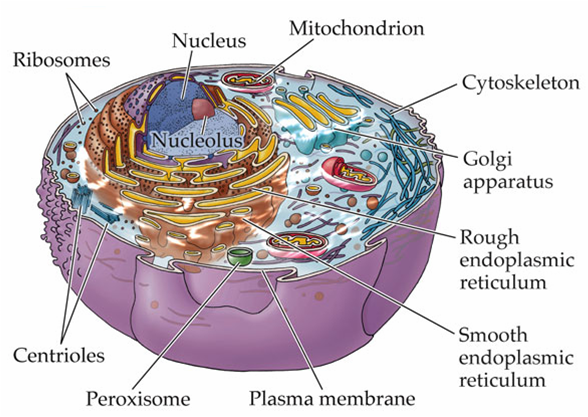

Pyruvate enters the citric acid cycle by way of acetyl coA

Releases our first $CO_{2}$ and reduces another $NAD^{+}$.
Coenzyme A (coA) acts as a "handle" for cells to move around actetate in both catabolism and anabolism
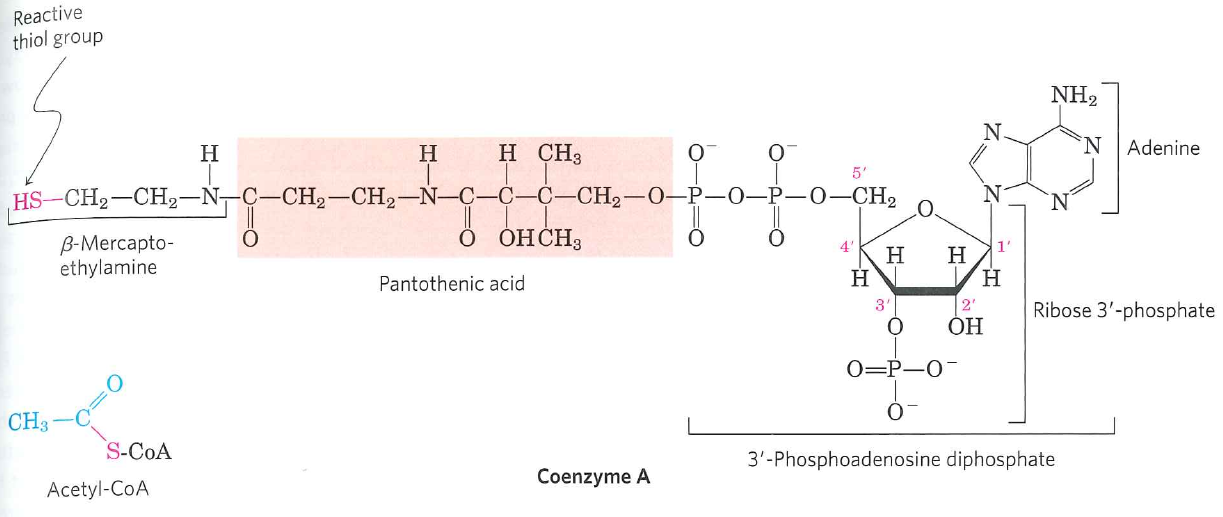
CoA stores energy like ATP in a high energy bond ($-31.5\ kJ \cdot mol^{-1}$)
The enzymes involved in metabolism are often complex, multi-subunit machines
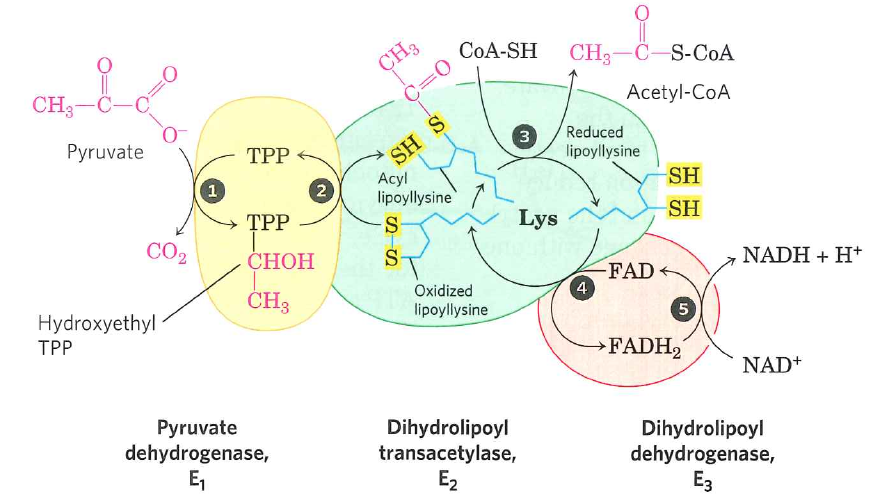
Acetyl-CoA comes enters the cycle by reacting with oxaloacetate to form citrate

How else might pyruvate enter the citric acid cycle?
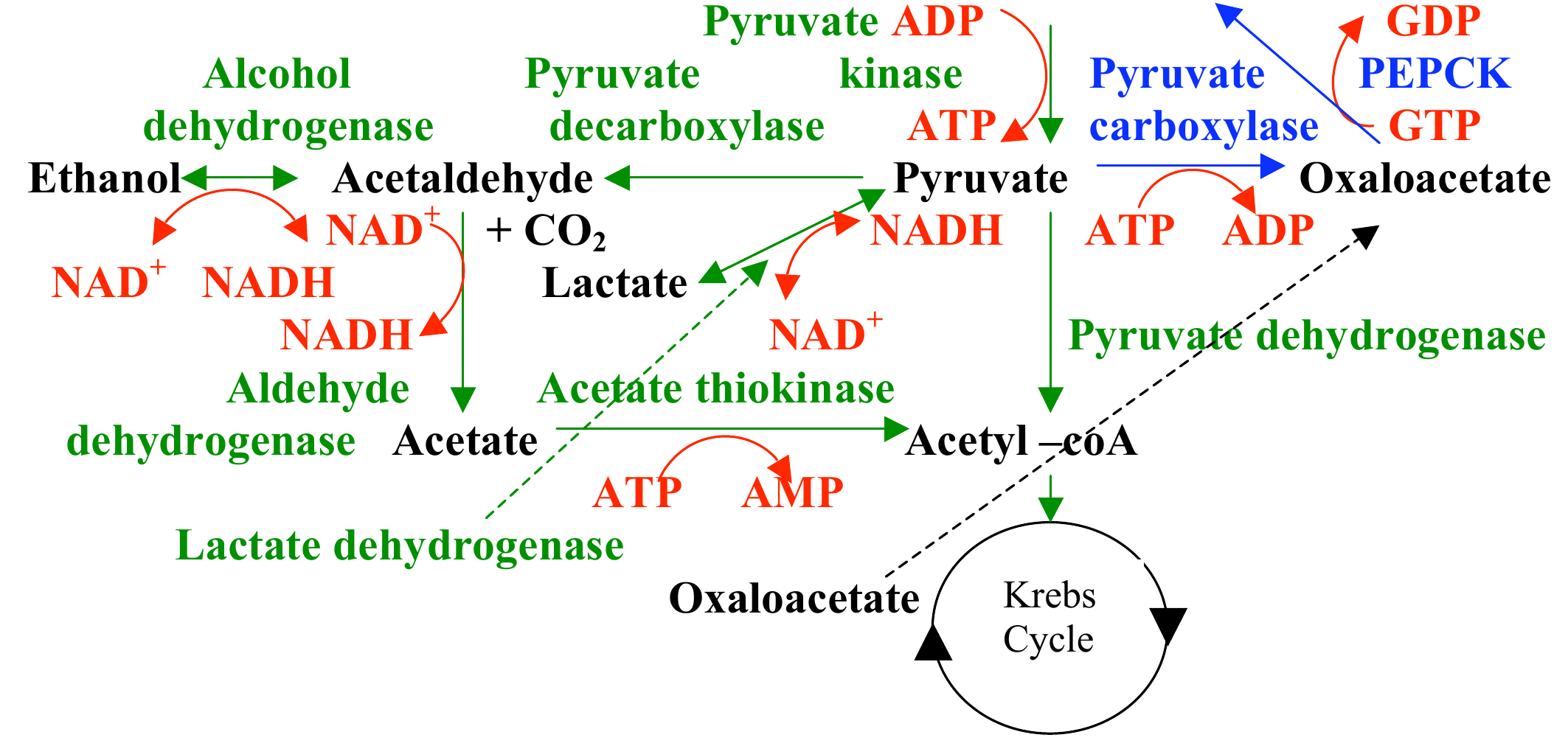
pyruvate to oxaloacetate (start of gluconeogenesis)
pyruvate to acetaldehyde to acetate to acetyl-coA
Citric acid cycle:
- Has eight steps
- Leads to carbon oxidation and release of $CO_{2}$
- Generates a bunch of reduced $NADH$
- Takes multiple cycles to completely convert pyruvate to $CO_{2}$
- Citric Acid Cycle = Kreb's Cycle = Tricarboxylic Acid (TCA) Cycle
It takes multiple cycles to completely convert pyruvate to $CO_{2}$
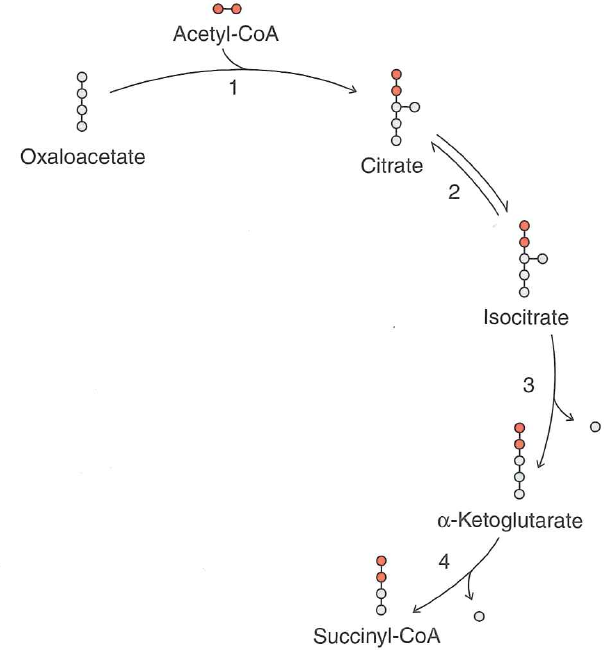
A quick tour of the citric acid cycle

Step 1: $oxaloacetate + acetyl-coA \rightarrow citrate$

Highly exergonic ($-31.5\ kJ \cdot mol^{-1}$)
Puzzle: Why isn't this captured as ATP?
Favorable reaction pulls cycle forward
Step 2: $citrate \rightarrow isocitrate$

Step 3: $isocitrate +NAD^{+}\rightarrow$
$\alpha -ketoglutarate + NADH + CO_{2}$

Step 4: $\alpha -ketoglutarate + CoASH + NAD^{+}\rightarrow$
$succinyl-CoA + NADH + CO_{2}$

Step 5: $succinyl-CoA + GDP + P_{I} \rightarrow$
$succinate + GTP + CoASH$

Step 6: $succinate + Q \rightarrow$
$fumarate + QH_{2}$

Step 7: $fumarate + H_{2}O \rightarrow$
$malate$

Step 8: $malate + NAD^{+} \rightarrow$
$oxaloacetate + NADH$

Highly unfavorable ($29.7\ kJ \cdot mol^{-1}$).
Dragged forward by highly favorable first reaction
The reduced electron carriers generated by the citric acid cycle contain a lot of energy
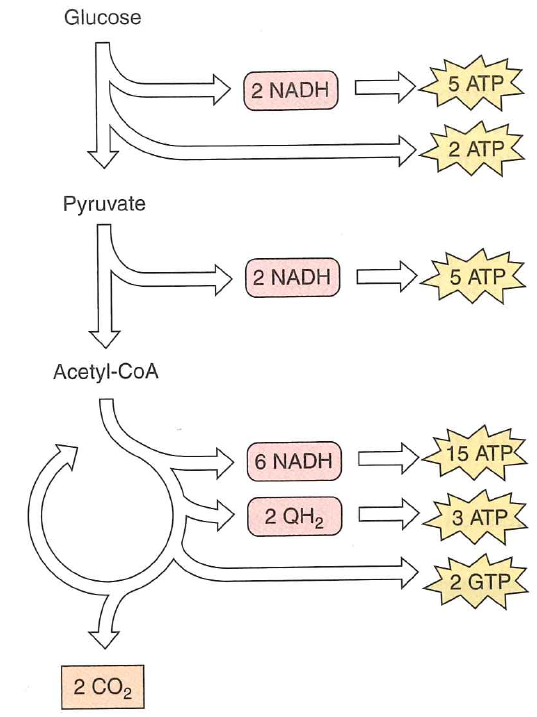
Discuss: What molecules regulate the citric acid cycle? What steps do they regulate?

Citric acid cycle is slowed by excess $NADH$ and activated by $ADP$ and $Ca^{2+}$
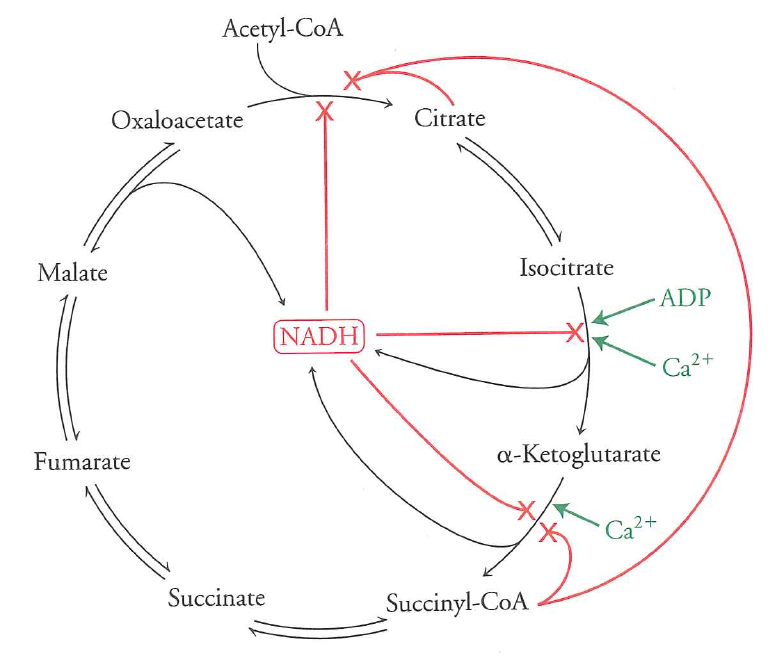
Points of regulation are highly favorable reactions

Discuss: Does the citric acid cycle ever get turned off completely? Why or why not?
No.
The citric acid cycle:
- It's used for carbon oxidation
- The reduced products it generates ($NADH$ and $QH_{2}$) can be oxidized by oxidative phosphorylation to yield $ATP$
- Provides access to much higher energy yields for glucose than glycolysis...provided there is some "final $e^{-}$ acceptor" around.